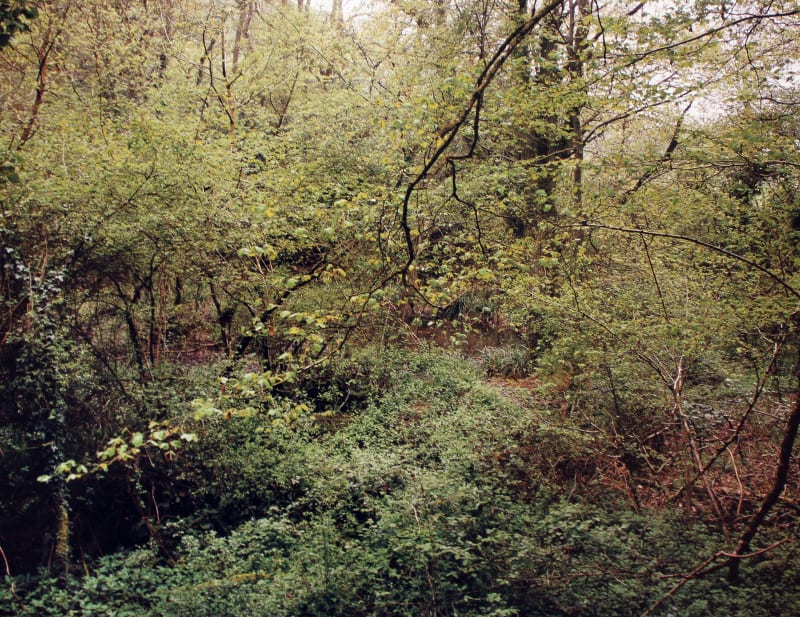Jem Southam is one of the most respected British photographers of the last twenty-five years. Inspired partly by the colour work of William Eggleston, Southam began in the 1970s to document the British countryside particularly the South West where he lives and works.
Characteristically he returns to the same place again and again to patiently and meticulously trace changes over seasons and even years. Often these histories are both natural and sociological, charting not just nature but the presence of man. As Southam has explained:
My overall artistic intentions are to make work that explores how our history, our memory, and our systems of knowledge combine to influence our responses to the places we inhabit, visit, create, and dream of.Combining natural observation with influences from literature, science and history, Southam's work oscillates between the epic and the everyday: I eschew grandeur for the sake of it preferring to revel in a subtler scale and history. But there's still an epic story to be told which exists wherever humans have made their homes.'
Southam uses a large format camera to produce 8 x 10 inch negatives. When enlarged to create c-type prints, the images reveal a mesmerizing level of detail. Southam also creates contact prints from his negatives which display an incredible intensity in both colour and contrast.
Jem Southam has been the subject of solo shows at numerous institutions including Tate St. Ives (2004), and The Victoria and Albert Museum (2006) and is included in many important collections including Rijksmuseum, Amsterdam, Museum Folkswang, Dusseldorf, and the Yale Centre for British Art, New Haven. Jem Southam is Professor of Photography at Plymouth University.
My overall artistic intentions are to make work that explores how our history, our memory, and our systems of knowledge combine to influence our responses to the places we inhabit, visit, create, and dream of.Combining natural observation with influences from literature, science and history, Southam's work oscillates between the epic and the everyday: I eschew grandeur for the sake of it preferring to revel in a subtler scale and history. But there's still an epic story to be told which exists wherever humans have made their homes.'
Southam uses a large format camera to produce 8 x 10 inch negatives. When enlarged to create c-type prints, the images reveal a mesmerizing level of detail. Southam also creates contact prints from his negatives which display an incredible intensity in both colour and contrast.
Jem Southam has been the subject of solo shows at numerous institutions including Tate St. Ives (2004), and The Victoria and Albert Museum (2006) and is included in many important collections including Rijksmuseum, Amsterdam, Museum Folkswang, Dusseldorf, and the Yale Centre for British Art, New Haven. Jem Southam is Professor of Photography at Plymouth University.
